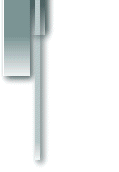
If you're a rock drummer, chances are you've played in only two meters: 4/4 and 3/4. You've gotten pretty good at it, and it feels really natural. You may have played in 7/8 (like "Money" by Pink Floyd), but that was the rare exception. So, when someone asks you to play in 5/4, or 7/4, or 11/8, the tendency is to drop into the deer-in-the-headlights thing and get all clammy.
Fortunately, learning odd meters is not as difficult as you might think! This lesson hopes to get you into the proper mindset for thinking about odd meters. Some of you may have a different approach - I'd love to hear it! This is the approach that worked for me.
![]()
![]()
The important phrase from the preceeding paragraph is "thinking about." Just as you can psyche yourself right out of the odd meter thing, you can also develop a mental process that helps you ease into it. The trick is to break the thing down to its smallest components.
For example, if someone asks you to play something in - let's say - 7/4, it might be easier to tackle this by breaking it down into corresponding measures of 4/4 and 3/4. That's all 7/4 is, after all. Just like the old parable about eating an elephant, odd meters are easier to comprehend and play if you break them down.
![]()
![]()
First, let's start with a simple 4/4 rock rhythm.
Odd Meters #1

Very basic. What we want to do is turn this into a 5/4 rhythm. Here's the final notation we're after:
Odd Meters #2

See what have we done? We've added one more beat to the pattern. If we were to keep this in 4/4, we'd have to write it out like this:

This sounds identical to the 5/4 notation, but it's not practical. So, we use the 5/4 notation. But, as I mentioned above, it helps to break this down into its smallest components. The 5/4 notation above can also be counted like this:

A measure of two followed by a measure of three. When dealing with 5/4 it's often simpler to count the 5/4 as 5/4. But, when dealing with more complicated time signatures (eg., 11/8) it's easier to get into the habit of breaking it down to its smallest components when you count it in your head. I'll show you how this works in a minute.
Odd Meters #3

This is an odd rhythm that could be notated as a 6/4, or even a 6/8 (which is more common than a 6/4) if we were to change the note values from quarter notes to eighth notes. I notated it like this as an exercise in counting.
Odd Meters #4

Here's a simple 5/4 rhythm. How would you break this down into its smallest components? As in exercise #2 above, how would you write this out in 4/4 - how many measures would it take?
Odd Meters #5

One of the reasons to count odd meters in their smallest componenets is so you can change them quickly without having to drastically switch gears. The above rhythm is a 9/8 pattern broken down into a 5/8 followed by a 4/8. Let's say the bandleader wants to throw in a measure of 11/8 into the 9/8 stuff. It's easier to do it like this:

We toss in the little 2/8 measure, then go back to our 5/8, 4/8 pattern.
When you get into music notation you'll often find that bandleaders and songwriters will break odd meters down to their smallest components for you, especially if odd measures like the 2/8 above are to be thrown in. It's easier to deal with as a musician. If you have a hankering to be a songwriter you should keep this in mind.
Odd Meters #6

This exercise is not strictly an "odd meter" notation, but it sounds like it is! One of the tricks in playing odd metered stuff is not making it sound odd metered. Likewise, you can make a standard-metered passage sound odd metered if you do uncharacteristic things with the sequence, like shifting it a bit (adding a beat now and then). Some of the things we did in Polyrhythms dealt with this.
Odd Meters #7

Here's an 11/4 pattern broken down into two measures of 4/4 and a measure of 3/4. (Band leaders will often call this "two measures of 4 and a measure of 3." They will assume the bottom number.) Note that the parenthetical bass drum note in the first measure is only to be played the second time you repeat this pattern. This makes the pattern sound longer than it actually is.
![]()
![]()
The easiest way to become comfortable with odd meters is to play them frequently. Fusion music was rife with odd meters: Chick Corea (Return To Forever), Billy Cobham, Mahavishnu Orchestra, Bruford (all the albums I'm thinking about are from the 1970s, when Fusion was King). Pick up a couple of these bands and make them part of your practice routine (there are many, many more Fusion bands than the ones I've listed). You might even want to try your hand at transcribing the drum parts! This will really help you advance your listening and reading skills!
As always, let me know how you've done!
![]()
![]()
![]()
